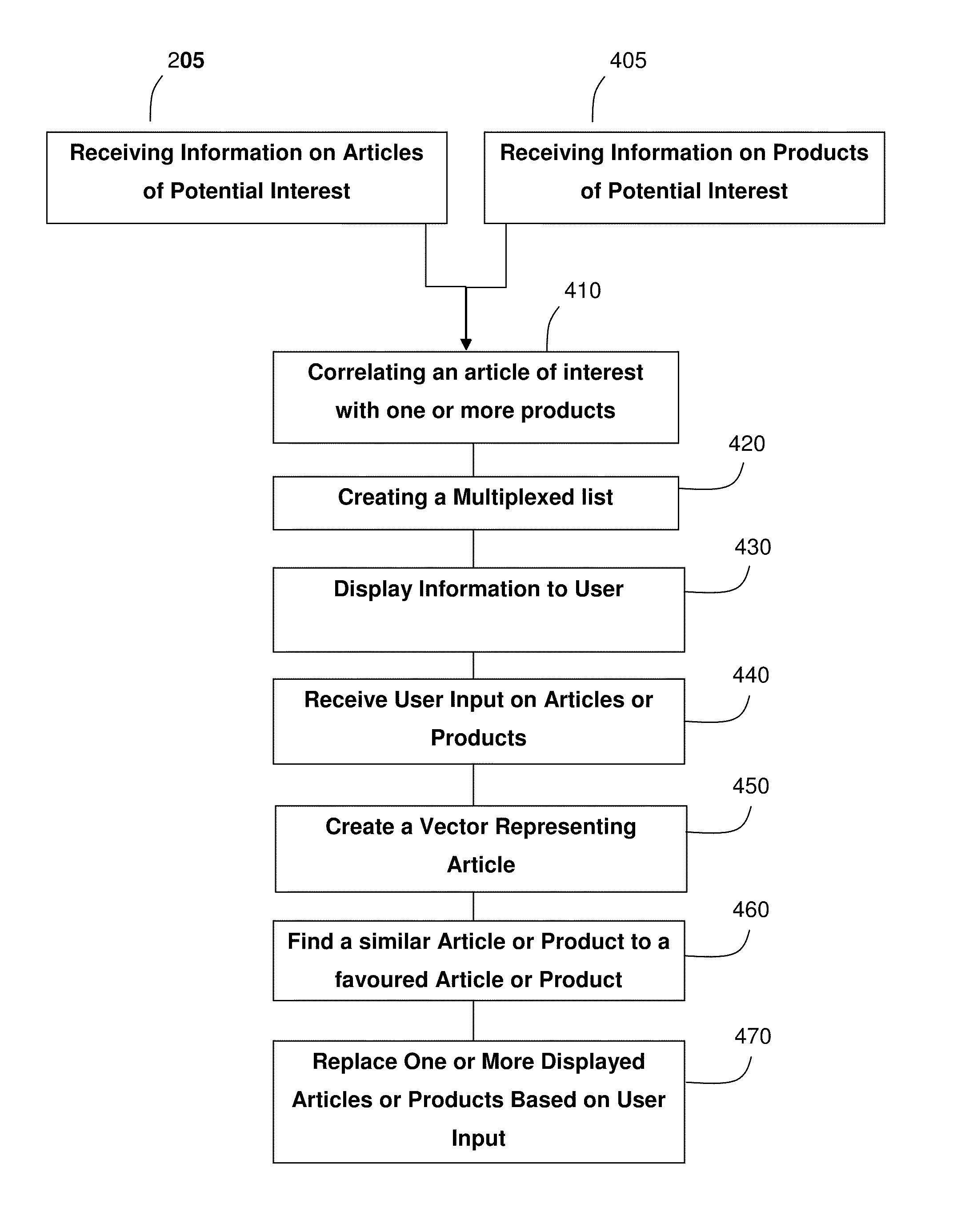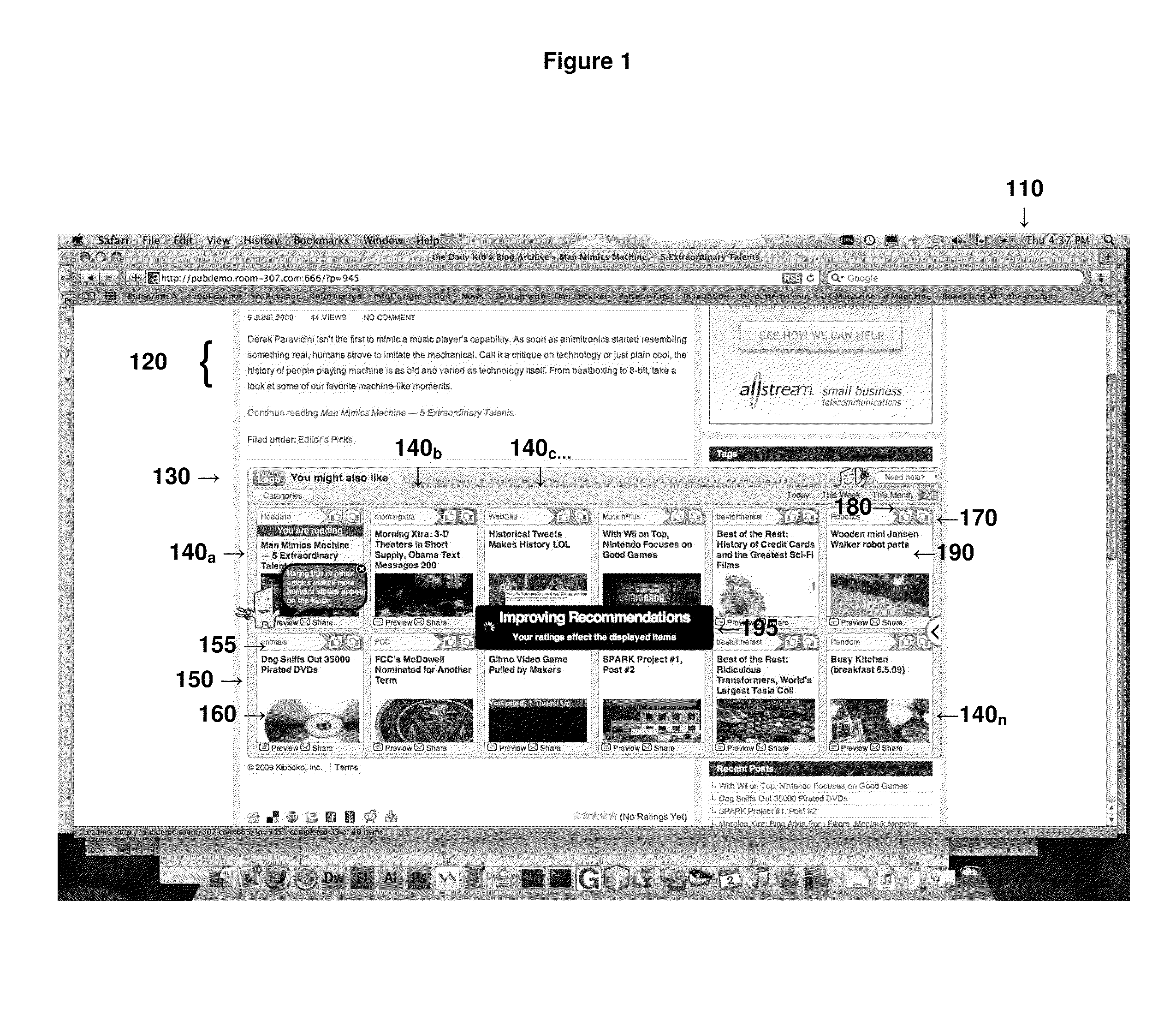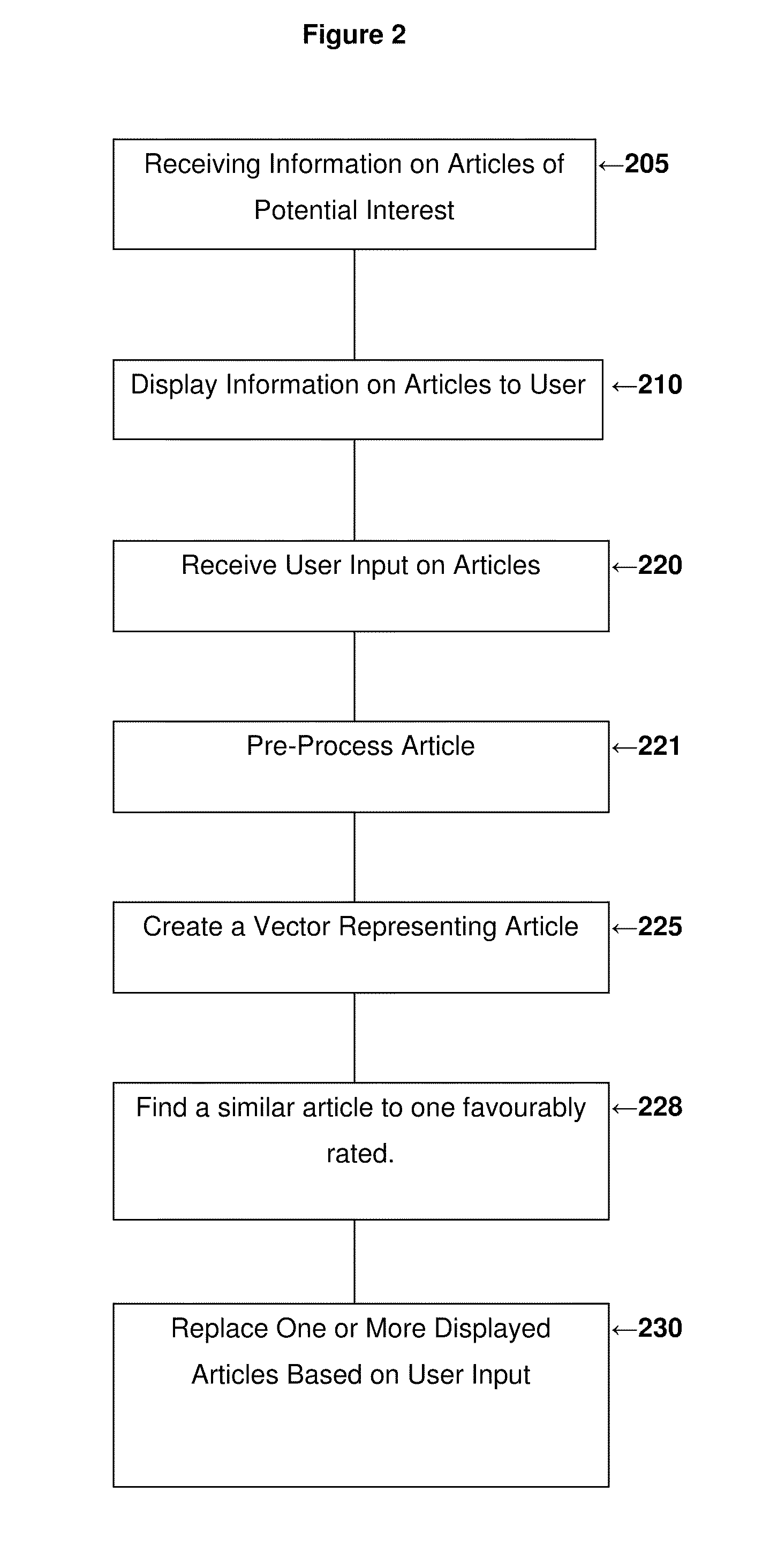Method and system for recommending articles and products
a technology of articles and products, applied in the field of online methods and systems for recommending articles and products, can solve the problems of reducing the chances of commerce, limiting the opportunity to recommend and affecting the recommending of appropriate or suitable products or services
- Summary
- Abstract
- Description
- Claims
- Application Information
AI Technical Summary
Benefits of technology
Problems solved by technology
Method used
Image
Examples
example # 1
Co-Visitation Example #1
Co-visitation tableItem ID #1Item ID #2# of co-visits within given time intervala211a3100a450b230b370
Item total views tableItem IDunique visitsa100335025041000b200
For each item viewed in the user's history, i ε viewed, the co-visitation count f is calculated (i.e., the count of how many unique users visited a pair of items or visited just one item) in respect of each possible candidate item (a candidate item could be an article or product), and this count is divided by the total number of viewed items to give a score:
∑i∈viewedf(viewed,candidate)f(viewed)#viewed
example # 2
Co-Visitation Example #2
For example, to calculate the score for candidate item 2 for a user having user history a, b, . . . n, where each a, b, . . . n is an item viewed or displayed by the user) the score would be calculated as follows:
f(a,2)f(a)+f(b,2)f(b)+…+f(n,2)f(n)n
In the above example, n is the total number of items visited by other users who have also visited item 2. In an embodiment of the invention, it may be desirable to calculate candidate items that are products only, or products that are associated with an image only, for example, or other configurable parameters. Even where the candidate items are products only, the co-visitation algorithm may still use articles viewed as input.
The correlation measures for all candidate items are compared, and the candidate item(s) with the highest score(s) may be presented to the user or queued in a list for presentation to the user when display space on the user electronic recommendation widget 130 is available. Intuitively, the can...
PUM
 Login to View More
Login to View More Abstract
Description
Claims
Application Information
 Login to View More
Login to View More - R&D
- Intellectual Property
- Life Sciences
- Materials
- Tech Scout
- Unparalleled Data Quality
- Higher Quality Content
- 60% Fewer Hallucinations
Browse by: Latest US Patents, China's latest patents, Technical Efficacy Thesaurus, Application Domain, Technology Topic, Popular Technical Reports.
© 2025 PatSnap. All rights reserved.Legal|Privacy policy|Modern Slavery Act Transparency Statement|Sitemap|About US| Contact US: help@patsnap.com



